Don’t miss this interview between our Communications Officer, Lily Haines (MSc), and Dr. Valeria Pizarro about the outcomes of this new research, how ships are linked to the spread of the disease, and steps we can all take to stop the spread!
Deemed “the deadliest immediate threat to Bahamian coral reefs,” the ominous spread of Stony Coral Tissue Loss Disease (SCTLD) has been shrouded in mystery.
For more than two years, the highly transmissible, waterborne disease has plagued The Bahamas’ stunning blue waters, travelling up to 50 metres (55 yards) per day and killing hundreds of corals in its wake. And the pathogen that causes SCTLD remains unknown, despite scientists discovering the disease off the coast of Florida more than six years ago, in 2014.
But our latest study reveals a gripping new clue… that is, commercial ships likely introduced SCTLD to The Bahamas.
The study, published in Frontiers in Marine Science, links the disease to ballast water ejected from large tanker ships off Grand Bahama, an island located about 108 km (67 miles) from Florida. Specifically, our Executive Director Dr. Craig Dahlgren, observed large tankers pumping out enormous quantities of water near reefs off Freeport – the island’s largest city and second most populous in The Bahamas.
Not to mention, the study revealed reefs closest to The Bahamas’ main commercial shipping ports in Grand Bahama and New Providence exhibited the most dramatic infection and mortality rates of corals. Indeed, infection rates among the most susceptible brain coral species, symmetrical brain coral (Pseudodiploria strigosa) were 23.1% in New Providence and 45.6% in Grand Bahama, with mortality rates up to 43%. This species often died within weeks of being infected.
”It’s really heartbreaking, especially when you go to dive on places where there used to be a lot of brain corals…,” said Dr. Valeria Pizarro, co-author on the new paper and Senior Scientist at the Perry Institute for Marine Science. “What you have now is a lot of dead colonies.”
Meanwhile, reefs located further from these ports were healthier, and displayed less of the tell-tale signs of white, exposed skeletal patches associated with the troubling disease.
.jpg)
“If ballast water was taken on board in a port area where SCTLD was present and not exchanged in open water away from reefs as required in The Bahamas, ballast water may have been the means by which SCTLD reached the Grand Bahama area some time in 2019,” the study notes.
What’s more, the disease hasn’t been reported on reefs near Bimini, an island unquestionably closer to Florida – the epicentre of the disease – than both Grand Bahama and New Providence. This further supports the authors’ hypothesis that ships are literally transporting the disease around the Caribbean.
But large tanker ships aren’t the only boats to blame.
“Smaller vessels including commercial and recreational fishing boats, yachts, and inter-island mailboats may have also contributed to the spread of SCTLD within each island and to other parts of The Bahamas,” the study notes.
Moving forward, spreading awareness about this devastating disease, as well as regulating the ballast water transfer and the on-site pumping and disinfection of bilge water from boats will be crucial.
SCUBA divers, snorkelers and spear-fishermen could also be accidentally transmitting the disease between reefs. To prevent human spread, it’s imperative that ocean lovers disinfect their gear with sodium percarbonate between dives.
”There are a few things that everyone can do, that we all can do, to stop the spread,” said Dr. Pizarro. “The first step is to get informed about the disease.”

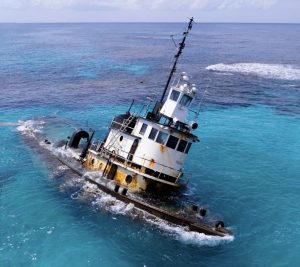
A Year Later, Stranded Tug and Barge Still Scars Reef in Fowl Cays National Park–Residents Demand Accountability
A haunting aerial view of the grounded tug and barge in Fowl Cays National Park—still embedded in coral a year later, a stark reminder of the cost of inaction. Photo
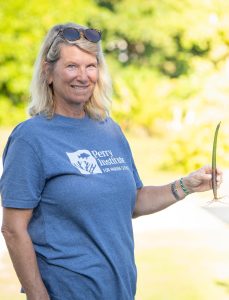
Women Leading Mangrove Restoration in The Bahamas
Have you ever wondered who’s behind the scenes saving our environment, right in our own backyard? Picture a group of energetic, determined women rolling up their sleeves and diving into
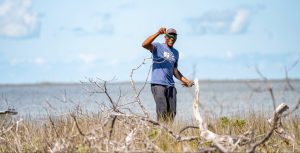
Rewilding the Marls of Abaco: PIMS Plants 100,000 Mangroves and Counting in 2024
As the afternoon sun bathes the Marls of Abaco in golden light, Bahamian boat captain Willis Levarity–locally known as “Captain to the Stars”–stands ankle-deep in soft, warm mud. A broad
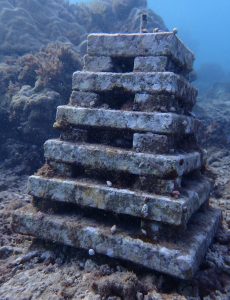
Unveiling Coral Reef Biodiversity: Insights from ARMS Monitoring Structures
An ARM teeming with new coral recruits and a diversity of marine life, highlighting reef recovery and biodiversity Understanding Coral Reef Biodiversity Most new PhDs in the natural sciences move

7 Key Takeaways from COP16: Confronting Coral Reef Challenges in a Changing Climate
United #ForCoral: Experts, advocates, and leaders from across the globe join forces at COP16 for the #ForCoral conference, hosted by the International Coral Reef Initiative. Together, they’re driving urgent action
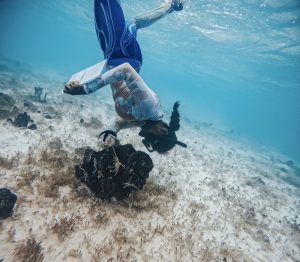
Fieldwork Wrap-Up: Strengthening MPA Management in The Bahamas
Marine protected areas (MPAs) are critical tools in the conservation of marine species and habitats, safeguarding reefs, seagrasses, and mangroves that provide vital ecosystem services to coastal communities. At the




